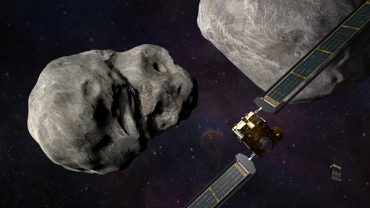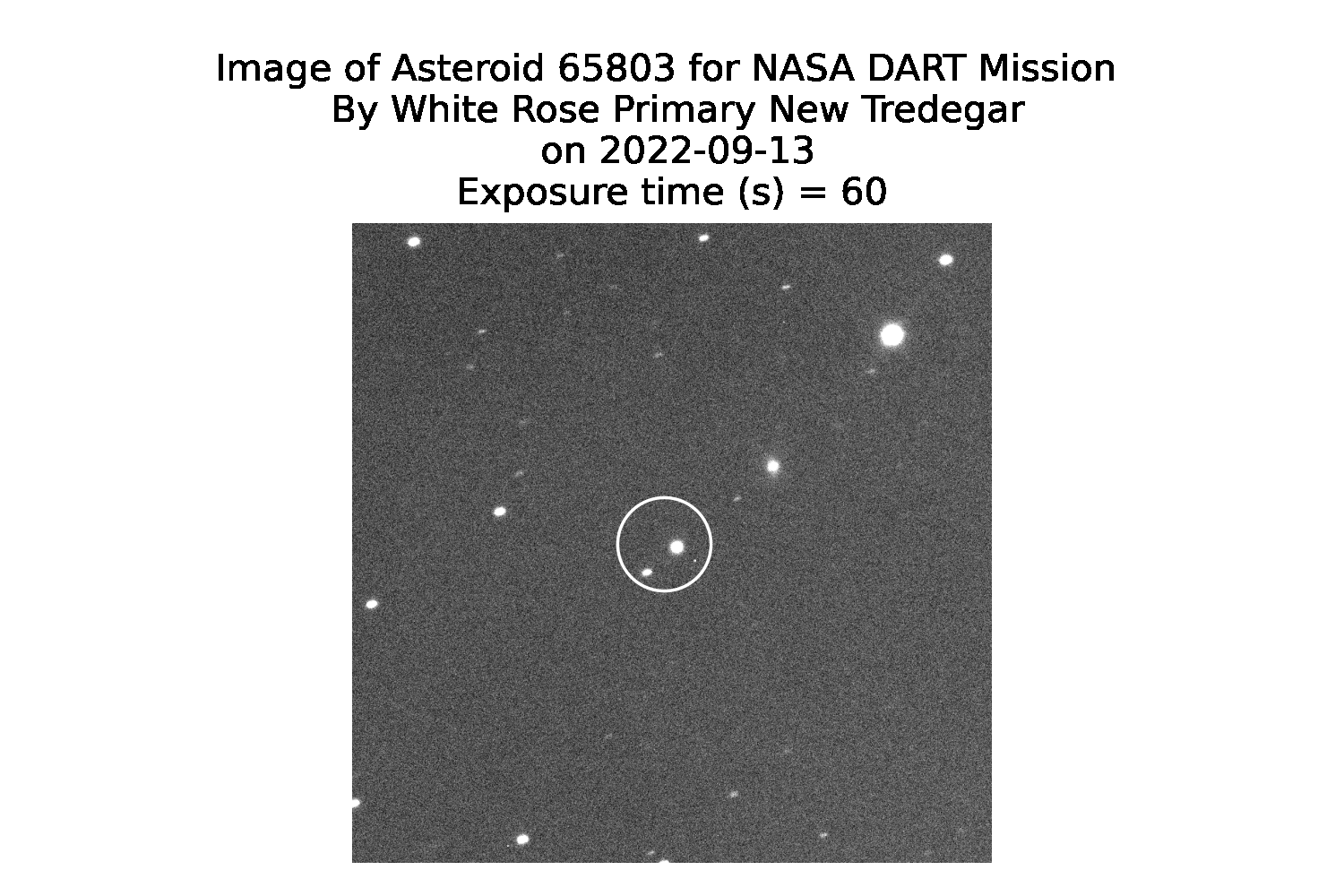
Illustration of NASA’s DART spacecraft and the Italian Space Agency’s (ASI) LICIACube prior to impact at the Didymos binary system. Image credit: Credits: NASA/Johns Hopkins APL/Steve Gribben
In Hollywood movies like Armageddon, Deep Impact, or the more recent Don’t Look Up, it is the Americans who save the Earth from the disaster of an asteroid or comet impact. But now Welsh school children are getting in on the act, observing an asteroid in support of An exciting NASA mission.
NASA and partners across the world are looking at real options for “Planetary Defence”, and they are about to test one in dramatic fashion – nudging an asteroid off course by smashing a spacecraft into it.
The DART – Double Asteroid Redirection Test – mission is targeting a double asteroid system consisting of Didymos (780m/half a mile across), and its small moon Dimorphos (160m/530 feet across).
Just after midnight tonight (26th September 2022), the car-sized spacecraft will crash into Dimorphos at about 6km/4 miles a second, with the aim of changing its orbit around Didymos. A small CubeSat named LICIACube, built by the Italian Space Agency, separated from DART a few weeks ago and will observe the collision from close-up.
Currently it takes Dimorphos just under 12 hours to complete a full orbit around Didymos. The impact will change this, and the scientists want to know by how much. That’s where observers on Earth, including Welsh schools, are going to help.
Pupils in Wales are making observations with large (1-meter and 2-meter) telescopes in the Las Cumbres Observatory (LCO) network from their school classrooms to help scientists accurately measure the orbit.
Access to these large research-grade instruments across the world (e.g. in Hawaii, Australia and South Africa) is possible through the Faulkes Telescope education project. Data from the schools in Wales will be used alongside other LCO data for detailed analysis of the effect the impact has on the double asteroid system.
“It’s a fantastic opportunity for schools to engage with real science, and the data provided by our partner schools across Wales will be part of the data that NASA will use to determine if their mission has been a success. It’s amazing to think that the observations made by our schools will really help future plans to defend Earth from incoming asteroids.” says Prof. Paul Roche of the School of Physics and Astronomy at Cardiff University.
The observing programme is part of an innovative education project called Comet Chasers, bringing real science observation into the classroom. The project team is led by researchers from Cardiff University and the Open University, working alongside educators and amateur astronomers. The project has already allowed Welsh school children to work with international researchers on several projects studying comets and asteroids. The schools have been setting up observations and gathering and analysing data. When partner researchers publish their findings, the schools are credited too. Schools are excited about seeing their names in papers and on the web.
Helen Usher, an Open University PhD student based in Hengoed, South Wales, is leading the DART observing programme for Comet Chasers. She thinks the schools’ data will be very useful for NASA. “We are working closely with NASA partners to ensure our observations can be used as part of the larger data set to aid analyse of the results of the impact – having more data points is always good!”.
Feedback from some of the pupils involved in the early stages of the DART mission observations has shown that they find the work exciting and enjoy the idea that their data is helping NASA develop its plans to protect the Earth. A Year 6 student at St Mary’s Catholic Primary School, Bridgend, commented: “The pressure is on. This observation is for NASA! I’m working for NASA!”.

Observations of the binary asteroid Didymos and its small moon Dimorphos, taken by White Rose Primary School, New Tredegar











